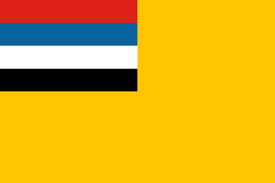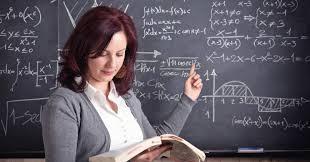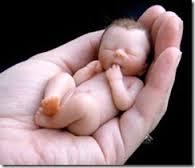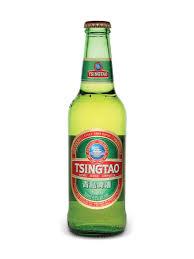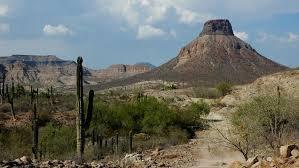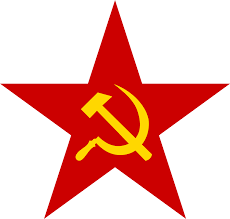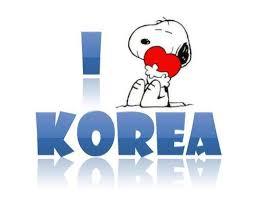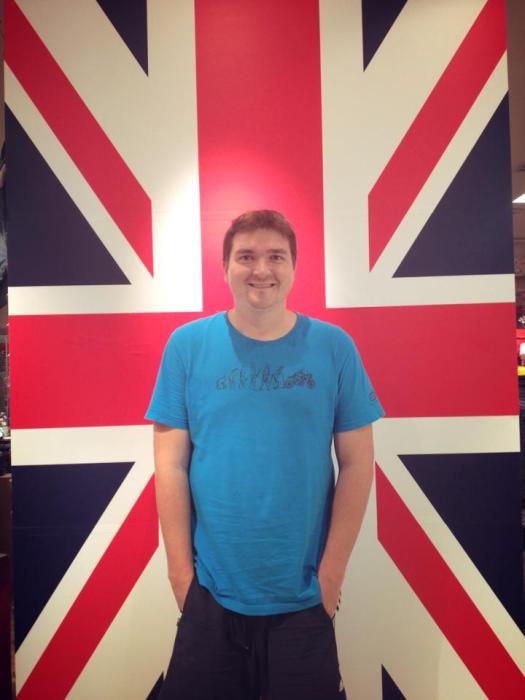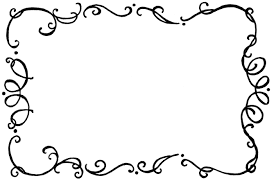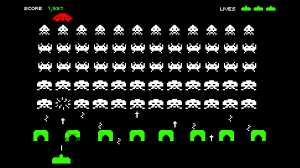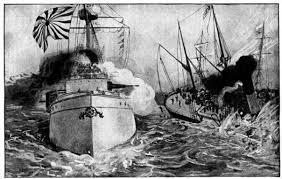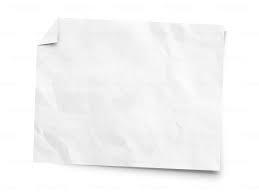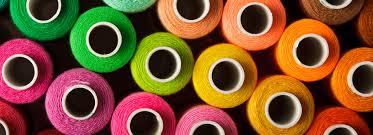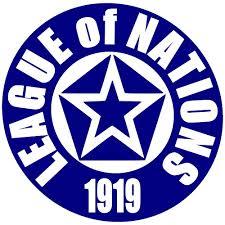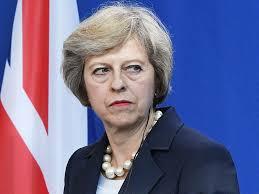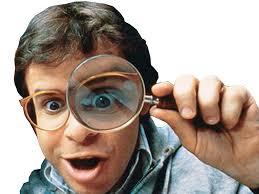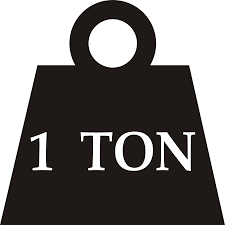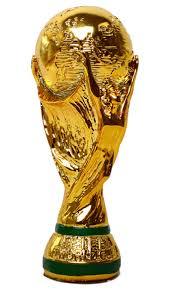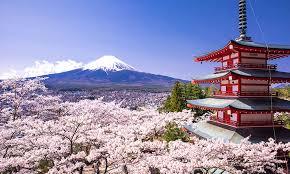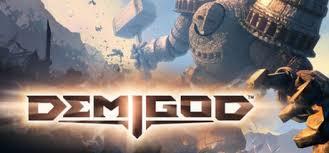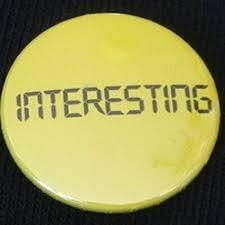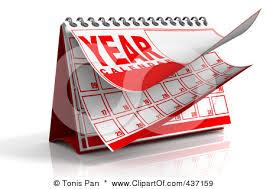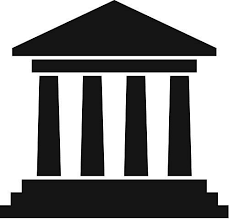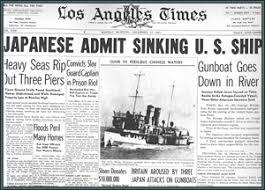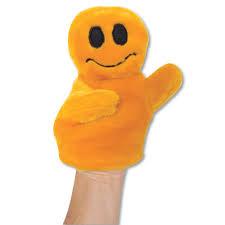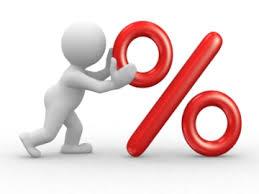Move To Global War - Japan - IB Paper 1 - By Dan Guiney
-
Which US President once said the Japanese "people have particular fighting capacity"?
-
Ted II
-
Teddy Bear
-
Theodore Roosevelt
-
Alvin Simon Theodore
-
A little pop quiz for IB students to test knowledge of the reasons for and events involved in Japanese expansion. For more information and resources visit www. Flippinghistory. Net

Quiz Preview
- 2.
The pre-modern government of Japan had been a military dictatorship in which real authority rested with a ___________
-
Shogun
-
Land rover
-
Seat Ibiza
-
Fiesta
Correct Answer
A. ShogunExplanation
In order to protect itself the military had held a special place in Japanese soceity for centuries. The pre-modern government of Japan had been a military dictatorship in which real authority rested with a shogun. Even after the Meiji Retoration the military was a political force in Japan, holding cabinet positions.Rate this question:
-
- 3.
Prior to the Meiji restoration what kind of society was Japan?
-
Feuding
-
Flood
-
Fjord
-
Feudal
Correct Answer
A. FeudalExplanation
Japan moved away from being a feudal society and underwent major modernisation in the late Nineteenth Century in what is known as the Meiji Restoration (1867-1912) in an effort to strengthen itself against foreign invasion.Rate this question:
-
- 4.
Which word do some Chinese historians believe should only be referred to in "quotation marks"?
-
Manchukuo
-
Maneater
-
Manchester
-
Mandy
Correct Answer
A. ManchukuoExplanation
Japan's expansionism in this period began in Manchuria. The word itself is controversial and some such as Mariko Tamanoi believe it should be used in quotation marks.Rate this question:
-
- 5.
In Meiji Japan teachers had to learn ____________________
-
How to cook
-
Military skills
-
Cross stitch
-
Sumo wrestling
Correct Answer
A. Military skillsExplanation
Moreover though Japan didn't just experience nationalism. It experienced ultranationalism, which is only a short step away from outright racism. It is important you can identify the difference between the two. Whilst many schools for example promote nationhood and cultural heritage in Japan it was taken to extremes. Compulsory education was extended from four to six years and during this time The Imperial Rescript on Education advised that Japanese children "extend your benevolence to all." The national curriculum emphasised loyalty to the state and special importance was placed upon the perception of the Emperor's divinity (he was seen as the 124th direct descendent of Emperor Jimmu who was descended from the Sun Goddess) as well as 2,600 year old Japanese history and culture. Teachers in training had to learn military skills and a special connection between education and the military developed.Rate this question:
-
- 6.
Who was the Manchurian warlord killed by the Japanese Kwantung Army in 1928?
-
Olivia Yang
-
Michelle Korolkov
-
Zhang Zoulin
-
Jeongwoo Gabrielse
Correct Answer
A. Zhang ZoulinExplanation
In 1928 the Kwantung Army, many of whom were members of the Kodoha, ordered the assasination of Manchuria's warlord, Zhang Zoulin. This faction set out to free Japan from economic depression by pursuing a course of aggression.Rate this question:
-
- 7.
How big was China?
-
Tiny
-
Miniscule
-
Dwarf like
-
4,000,000 square miles
Correct Answer
A. 4,000,000 square milesExplanation
Chiang Kai Shek suspected China was simply too big (4 million square miles) to be defeated in the long term. Japan would simply run out of resources.Rate this question:
-
- 8.
Where did Japan defeat German forces in November 1914 during the First World War?
-
Heineken
-
Budweiser
-
Tsingtao
-
Chang
Correct Answer
A. TsingtaoExplanation
When the First World War broke out Japan continue to demonstrate its military powers. Germany had built a fortified harbour at Tstingtao which it surrendered to the Japanese in November 1914. Japan then took control of various Japanese colonies in the Pacific including Palau, the Marianas, the Marshalls, and the Carolines.Rate this question:
-
- 9.
Which of the following countries was NOT a member of the Tripartite intervention which sought to limit the growth of Japanese power in Asia following the first Sino-Japanese war?
-
Germany
-
Russia
-
Mexico
-
France
Correct Answer
A. MexicoExplanation
However, Britain and Russia were not keen on seeing Japan's power grow because they both had interests in Asia. As a result the Tripartite Intervention occurred meaning Russia took the Liaodong Peninsular on lease from China instead of Japan and also the Shandong territories were given to Germany. This was a humiliation for Japan and there is a strong argument that there were racial connotations to it as well as economic (after all the British for example had many beliefs about theiir own superiority across the world).Rate this question:
-
- 10.
Unemployment led to a rise in the popularity of which group?
-
Fascists
-
Communists
-
Samurai
-
Smurfs
Correct Answer
A. CommunistsExplanation
The economy then rapidly contracted. Skilled workers such as mechanics, electricians and carpenters suffered approximately 7.5% unemployment while over 40% of skilled workers were also unemployed. Then in late 1929 the Great Depression struck. Countries, such as Japan's main tradibg partner the USA, stuck up trade barriers. Japan's Gross National Product declined by approximately 20% between 1929-31 and stocks on the Tokyo stock market halved in value. 50% of small and medium sized businesses closed permanently and exports fell by over 40%. During the start of the Great Depression the number of banks shrank from 1,300 to just 700. Agriculture prices declined by 45% between 1929 and 1931. Unemployment and hunger led to political unrest, riots and a surge in popularity of the communists.Rate this question:
-
- 11.
In what year had Japan forced itself on Korea?
-
1676
-
1776
-
1876
-
1976
Correct Answer
A. 1876Explanation
Korea was Japan's closest neighbouring state and Japan had invaded it back in the Sixteenth Century before being forced out. By 1876 though Japan was in a strong enough position to enforce over Korea the Japan-Korea Treaty, also known as the Treaty of Ganghwa Island or the Treaty of Amity.Rate this question:
-
- 12.
Which nation signed an agreement with Japan in 1902, paving the way for the Russo-Japanese war?
-
USA
-
Great Britain
-
China
-
Korea
Correct Answer
A. Great BritainExplanation
The British then signed an agreement with Japan known as the Anglo-Japanese Allianceof 1902. This stated that they would help each other militarily if involved in a war against two powers. Seeing as Russia's main ally France was preoccupied with Germany in Europe there was little chance a Japanese war against Russia would therefore involve the UK, thus giving Japan the green light to attack Russia.Rate this question:
-
- 13.
Which treaty concluded the Russo-Japanese war, the first time an Asian nation had defeated a European one?
-
Treaty of Kangqiao
-
Treaty of Andover
-
Treaty of Norwich
-
Treaty of Portsmouth
Correct Answer
A. Treaty of PortsmouthExplanation
During the Boxer Rebellion in 1900 Russia had stationed 200,000 troops in Manchuria and refused to move them. Moreover they had a fleet of warships in Port Arthur since 1897. In February 1904 relations got so bad that the Russian ambassador was asked to leave Japan and the Japanese attacked the Russian fleet at Port Arthur on 8th February. By April the Japanese had entered Manchuria and by January 1905 had destroyed the Russians in Port Arthur. 500,000 soldiers were involved in a battle at Mukden and Russia sued for peace after a revolution at home. The ensuing peace treaty was known as the Treaty of Portsmouth (1905) and meant that
Japan now again leased the Liaodong Peninsular and Port Arthur from China
Granted Japan the right to lease the Russian built Southern Manchuria railway from China
Granted Japan the southern half of Sakhalin Island
Japan's rule over Korea was now legitimateRate this question:
-
- 14.
With which Communist country did Manchuria share a 2,000 mile border?
-
North Korea
-
Soviet Union
-
VIetnam
-
Cuba
Correct Answer
A. Soviet UnionExplanation
Manchuria shared a 2,000 mile border with the Soviet Union. Manchuria, a region in northeastern China, was under Soviet control after World War II. The Soviet Union had a significant presence in Manchuria and played a major role in shaping its political and economic landscape. Therefore, it is logical to conclude that the correct answer is the Soviet Union.Rate this question:
-
- 15.
Which Chinese city suffered 'the rape'?
-
Beijing
-
Shanghai
-
Guangzhou
-
Nanjing
Correct Answer
A. NanjingExplanation
Nanjing suffered a terrible war crime known as the 'rape of Nanjing' where somewhere in the region of 340,000 Chinese were killed. Prince Asaka's Central China Area Army looted, raped women and children, tortured, mutilated, burned and decapitated en masse. By mid-1939 Japan controlled most of eastern China and China's government moved to Chongqing in the far west.Rate this question:
-
- 16.
Whilst Europe was preoccupied with war in the First World War how many demands did Japan impose on China?
-
16
-
21
-
26
-
31
Correct Answer
A. 21Explanation
While Europe was preoccupied with war Japan then forced the 21 Demands on China in January 1915. Although these were later reduced to 13 they included humiliating aspects such as agreeing to give up Shandong, allowing Japanese 'advisers' to work in its government, and to receive all military training from Japan only.Rate this question:
-
- 17.
Japan had been invaded four times by European powers up to the time of the Meiji Restoration.
-
True
-
False
Correct Answer
A. FalseExplanation
Japan was unique in that it was the only Asian nation never to have been annexed by a Western or American power and had an ancient history of independence which fed its sense of specialness and ultranationalism further still.Rate this question:
-
- 18.
Are Audrey, Dayin, and Tiffany amazing?
-
Yes
-
No
Correct Answer
A. YesExplanation
Based on the given options, the answer is "Yes" because the question asks if Audrey, Dayin, and Tiffany are amazing, and the response "Yes" indicates that they are indeed amazing.Rate this question:
-
- 19.
With whom did a war with Japan begin in August 1894?
-
Kenya
-
Australia
-
China
-
UK
Correct Answer
A. ChinaExplanation
In 1884 supporters of Japan even overthrew the Korean government. It was very clear to any nation watching that Korea could not adequately defend itself. In 1885 Britain got involved and took over a Korean port also. Japan continued to meddle putting 8,000 troops in its capital and assasinating Empress Myeongseong in 1895. These Japanese actions in Korea (effectively taking it over) led to war with China in the first Sino-Japanese war from August 1894.Rate this question:
-
- 20.
Which paper document, drawn up in 1889, set in stone the rules of the new Meiji Restoration?
-
Edict
-
Constitution
-
Proclamation
-
Laws
Correct Answer
A. ConstitutionExplanation
This modernisation programme was formalised in the Meiji Constitution of 1889 - a formal set of rules drawn up by a special group called the Privy Council governing how the nation was to be ruled.Rate this question:
-
- 21.
The textile industry led Japanese industrialisation in the Meiji period
-
True
-
False
Correct Answer
A. TrueExplanation
Historian Andrew Gordon points out that "Industrialisation was led by the textile industry. From the 1890s through 1913 output of silk quadrupled. By the end of World War I three-fourths of these threads were produced by machine, whereas earlier most silk had been reeled by hand. In addition, about three-fourths of sik output was being exported each year. Production of cotton thread increased at similar rates ... about half of the cotton output came to be exported, mainly to China and Korea."Rate this question:
-
- 22.
What is the Japanese word for monopolies that dominated industry? (clue: the word begins with a capital 'Z')
Correct Answer
ZaibatsuExplanation
Monopolies, called Zaibatsu, rapidly expanded. The zaibatsu Mitsui, for example, was involved with banking, mining, paper, textiles, and more. By 1918 the eight largest zaibatsu controlled 20% of all manufacturing, mining and trade in Japan.Rate this question:
- 23.
Which of the following was NOT a Japanese puppet government/state?
-
East Hebei Autonomous Council
-
The Sooty and Sweep Dominion
-
Manchukuo
-
Mengjiang
Correct Answer
A. The Sooty and Sweep DominionExplanation
Japan formed the China Garrison Army to operate outside Manchurian borders. When two newspaper editors were killed for being pro-Japanese the Japanese then used this as pretence for going beyond the borders agreed at the Tanggu Agreement. The Umezu-He Agreement of 10th June 1935 made this official and created another puppet government, the East Hebei Autonomous Council. Japan also withdrew from the naval agreement made in London in 1935. A further puppet government was later set up in 1936 in Mengjiang or Mongolland.Rate this question:
-
- 24.
Which agreement did China sign which stated they would not fight back against the Japanese after their aggression in Manchuria?
-
Tango Agreement
-
Tangerine Agreement
-
Tanggu Agreement
-
Tanga-na Agreement
Correct Answer
A. Tanggu AgreementExplanation
Manchukuo unsuccessfully applied to be in both the Olympics and the League of Nations. By January 1933 Japanese soldiers were posing for pictures on the Great Wall and on 31st May 1933 China signed the Tanggu Agreement promising not to fight.Rate this question:
-
- 25.
Japan was made a permanent member of the council of the League of Nations at the end of the First World War, so important was it now as a major economic and military power.
-
True
-
False
Correct Answer
A. TrueExplanation
Japan's inclusion as a permanent member of the council of the League of Nations after World War I indicates its significance as both an economic and military powerhouse. This decision acknowledges Japan's growing influence and recognizes its role in shaping global affairs.Rate this question:
-
- 26.
How much larger was Manchuria than Japan?
-
4 times
-
6 times
-
8 times
-
10 times
Correct Answer
A. 4 timesExplanation
It had lots of resources including oil (90% of China's total), cotton, forests and farms, coal, iron (70% of China's total), aluminium, magnesite (a bit like lime but which was be used in industrial furnaces), gold (55% of China's total), and lead. It was China's industrial centre.Rate this question:
-
- 27.
Which note did the US issue two weeks prior to Pearl Harbor?
-
The Hull Note
-
The Hell Note
-
The Hill Note
-
The Hall Note
Correct Answer
A. The Hull NoteExplanation
This pressure was increased with The Hull Note of 26th November 1941, named after the US Secretary of State Cordell Hull. It requested Japan remove its troops from Indochina and China/Manchuria and leave the Tripartite Alliance. Two weeks later Japan attacked.Rate this question:
-
- 28.
What does 'Gashin Shotan' mean in Japanese?
-
Live long and prosper
-
Endurance and hard work for the achievement of future revenge
-
Expelliarmus!
-
Be ambitious
Correct Answer
A. Endurance and hard work for the achievement of future revengeExplanation
Japanese military had experienced substantial success in Korea and China and yet had left feeling humiliated and that they were not being allowed a greater share of the spoils. 'Gashin Shotan' or 'endurance and hard work for the achievement of future revenge' became the order of the day.Rate this question:
-
- 29.
In which incident was the Japanese Prime Minister assassinated?
-
15th April
-
15th May
-
15th June
-
15th July
Correct Answer
A. 15th MayExplanation
The Japanese government themselves had tried to act to a certain extent but had little control over the militaristic forces at play. When the perpetrators of the Mukden incident were to be arrested the Kwangtung army simply refused. And when the Prime Minister who had already survived two assassination attempts tried to talk to Chiang Kai Shek he was killed in the 15th May Incident.Rate this question:
-
- 30.
At what time exactly did the attack on Pearl Harbor begin on 7th December?
-
5.45am
-
7.48am
-
12.00pm
-
5.30pm
Correct Answer
A. 7.48amExplanation
On 7th December (8th December in Asia) at 7.48am Japan attacked many places, including Pearl Harbor, the main US naval base in Honolulu, Hawaii under Commander Mitsuo Fuchida – who launched the attack with the words “Tora tora tora” meaning “Tiger tiger tiger”.Rate this question:
-
- 31.
What happened to the Japanese economy after 1920?
-
Grew
-
Stayed the same
-
Shrank
Correct Answer
A. ShrankExplanation
In 1920, however, the economy severely shrank. as demand for Japanese goods shrank. In particular this led to agrarian panic. Nobuya Bamba points out that the price of rice, taking the average for three years from 1911-1913 as 100, was 114 in 1925 but dropped to 98 in the next year and to 87 in 1928. In terms of actual income the average price of one sack of rice cost only about 6-7 yen in 1928. This meant that about 40% of the agrarian population earned less than 60 yen from the rice crop after having paid their rents. Japanese silk that had sold in New York for $5.25 per pound in 1929 went for less than half this price ($2.50) just thirteen months later. Moreover, an earthquake and fire destroyed most of Tokyo, Japan's capital, in 1928.Rate this question:
-
- 32.
The League of Nation's voted against Japanese aggression in Manchuria by what ratio?
-
43:0
-
22-21
-
42-1
-
30-13
Correct Answer
A. 42-1Explanation
Most countries responded to Japanese aggression negatively but little was done to reverse the result. China appealed to the League of Nations for help and this was the first major battle between two League members. The result was the Lytton Commission, a slow and toothless reply which branded Japan the aggressor but which did not invoke the League's founding principle of collective security. The Commission formed in December 1931, didn't even get to Manchuria until February, and wasn't submitted to the League until October 1932, a full year after the invasion began. The League voted 42:1 to condemn Japan's actions, Japan being the single vote against. Its response was simply to leave the League in 1933 with no consequences.Rate this question:
-
- 33.
How many divisions or houses were there in the new Japanese Diet? (sorry about the picture, bad pun!)
-
0
-
2
-
4
-
8
Correct Answer
A. 2Explanation
It created a Parliament called the Diet which consisted of two divisions: the appointed House of Peers (nobility, big taxpayers, famous individuals and special appointments made by the Emperor himself) and the democratically elected House of Representatives (elected by men over the age of 25 years).Rate this question:
-
- 34.
At the end of the first Sino-Japanese war, which was a resounding success for Meiji modernisation, China was forced to pay Japan 13,600 tons of what?
-
Tea
-
Silver
-
Gold
-
Plutonium
Correct Answer
A. SilverExplanation
The war was a rapid success for Japan. Japan had a modern navy with floating pontoons, iron warships and modern rifles. By October China had been kicked out of Korea and Japan invaded Manchuria. By November Japanese forces had captured Port Arthur; by mid-February had captured the port of Weihaiwei; and by March had captured islands off Taiwan. The war ended in a resounding victory for Japan in the Treaty of Shimonoseki in April 1895 in which Korea gained full independence from China, Japan was to receive an indemnity of 13,600 tons of silver, Japan would have access to four Chinese ports and complete freedom of trade along the Yangtze, and Japan would be given the Liaodong Peninsular as well as Taiwan.Rate this question:
-
- 35.
With which nation did the Manchukuo national football team first play? (they conceded 13 goals in their first two matches)
-
Japan
-
Philippines
-
Vietnam
-
Italy
Correct Answer
A. JapanExplanation
They lost 4 of their 7 games and drew 1-1 with the Philippines. For two of their games the score was unrecorded!Rate this question:
-
- 36.
Which historian argued that Manchuria was not actually that big a deal in causing the Second World War?
-
Ian Kershaw
-
Iris Chang
-
AJP Taylor
-
Pertti Ahonen
Correct Answer
A. AJP TaylorExplanation
A J P Taylor argued that the League's response did see the conflict come to an end and moreover that it was thanks to this that the League put in place the machinery for sanctions which hitherto had never been put in place!Rate this question:
-
- 37.
Which of the following is NOT a real faction in Japanese society in this period?
-
Sakurakai
-
Kodoha
-
Toseiha
-
Naisasha
Correct Answer
A. NaisashaExplanation
The control faction or Toseiha of the army wanted to reform Japan's government rather than destroy it. More redical factions such as the Sakurakai (Cherry Blossom Society) and Kodoha (Imperial Way) wanted complete destruction of political parties. These radical groups attempted a series of coups from 1931 onwards and the army effectively took control of the government. This can be seen in the appointment of Prime Ministers from the army and navy; between 1932 and 1941 Japan had nine different men serve as Prime Minister, six of whom were generals or admirals.Rate this question:
-
- 38.
What name was given to Japanese foreign policy in the 1920s? (the idea of keeping a strong military but reassuring neighbours they had nothing to fear)
-
Shidehara Diplomacy
-
Gichana Diplomacy
-
Wallace Diplomacy
-
Lo Diplomacy
Correct Answer
A. Shidehara DiplomacyExplanation
Japan instituted conscription and increased the size of its navy. The government's foreign policy in this period, known as Shidehara Diplomacy after its foreign minister of the late '20s and 30s Kijuro Shidehara, consisted of a balancing act of maintaining its military power whilst at the same time ensuring it reassured its neighbours they had nothing to fear.Rate this question:
-
- 39.
What was the USA's response?
-
The Truman Doctrine
-
The Stimson Doctrine
-
The Trump Doctrine
-
The Doctor's Doctrine
Correct Answer
A. The Stimson DoctrineExplanation
The League of Nations had been established as the final of President Wilson's 14 Points and sought to promote collective security to ensure that the First World War was "the war to end all wars." The USA was not a member of the League, however, and wanted to protect its Open Door Policy - i.e. ensure all nations have equal trade with China. It did implement the Stimson Doctrine (named after Secretary of State Henry Stimson) which stated the US would not recognise changes in borders resulting from the war.Rate this question:
-
- 40.
Under which Article of the Constitution was the Emperor's demi-God status underwritten?
-
1
-
2
-
3
-
4
Correct Answer
A. 3Explanation
Article 3 of the Constitution stated "The Emperor is sacred and inviolable." Indeed, he was perceived to be a direct descendent of heaven who had the best interests of the Japanese people at heart. The Constitution is a crucial document.Rate this question:
-
- 41.
What is interesting about Kazuo Sakamaki?
-
He was the first Japanese POW
-
He was the first kamikaze pilot
-
He invented the midget submarine
-
He became Prime Minister
Correct Answer
A. He was the first Japanese POWExplanation
A little known fact is that Kazuo Sakamaki became the first Japanese Prisoner of War in World War II. He was washed ashore having collapsed whilst swimming underneath his midget submarine to try and repair it!Rate this question:
-
- 42.
In what year was the Peace Protection Law which attacked Japanese communists?
-
1923
-
1924
-
1925
-
1926
Correct Answer
A. 1925Explanation
Communism appealed to the millions of unemployed urban workers and even though membership of the Party was small the government decided to crack down on them through the Peace Protection Law of 1925. As Tessa Morris-Suzuki writes "Within a month of the (1928) election over one thousand left wing sympathisers had been arrested." The world's only communist state was the Soviet Union which bordered Japanese owned Korea as well as Manchuria.Rate this question:
-
- 43.
When Chiang left Nanjing where did he initially move his government to?
-
Shenyang
-
Wuhan
-
Sanya
-
Shanghai
Correct Answer
A. WuhanExplanation
Alarmed at Japan's rapid successes Zhang Xueliang, the former warlord of Manchuria, kidnapped Chiang and forced him to set up a second united front with the Communists. In July 1937 China resisted in the Marco Polo Bridge Incident where they fought at Lugou Bridge. Chiang tried to retaliate by bombing a Japanese ruled area of Shanghai on 13th August. Two days later Japan formed the Shanghai Expeditionary Army and used bomber aircraft on Nanjing. Shanghai was overwhelmed and Chiang withdrew to a capital safely in the west, Wuhan.Rate this question:
-
- 44.
Which ship did the Japanese sink after which they gave compensation to the United States?
-
Saratoga
-
Lexington
-
Arizon
-
Panay
Correct Answer
A. PanayExplanation
The USA was keen to maintain its open door policy. The USA, the world's largest supplier of oil, continued supplying Japan until 1940 - even when a small US navy ship (the USS Panay) was sunk by the Japanese in December 1937. It wanted to trade with China and Japan. As long as Japan did not threaten US interests (like the Philippines) it would surely stay out.Rate this question:
-
- 45.
What percentage of the US and British navy did the Washington Naval Conference of 1921-22 allow Japan to maintain?
-
50%
-
55%
-
60%
-
65%
Correct Answer
A. 60%Explanation
As part of this in 1921-22 Japan attended the Washington Naval Conference in which it was agreed they would reduce their navy to 60% that of the USA and Britain (in reality this saved Japan 500 million yen per year but Japanese ultranationalists at home regarded it as an insult and Ozaki Yukio, one of its signatories, was labelled a traitor by some). This naval agreement was amended in the 1930 London Naval Conference when Japan achieved a 69.75% ratio on battleships but cruisers remained at 60%.Rate this question:
-
- 46.
Who was the Kangde Emperor?
-
Akihito
-
Hirohito
-
Puyi
-
Cixi
Correct Answer
A. PuyiExplanation
Although China had over 100,000 soldiers in the area compared to Japan's 25,000 Japanese successes were rapid and there was little actual fighting. Manchuria was turned into a puppet state of the Japanese and called Manchukuo.Rate this question:
-
- 47.
How much actual damage was caused to the South Manchurian Railway during the Mukden Incident?
-
No damage
-
Half a metre's damage
-
One and a half metre's damage
-
One mile of damage
Correct Answer
A. One and a half metre's damageExplanation
Just as they had done previously (i.e. 1928) the Kwangtung Army then was about to act on its own. On 18th September a bomb exploded on the South Manchurian Railway outside Mukden, (now Shenyang) Manchuria's leading city - conveniently near a garrison of Japanese troops. It was so minor (about 1.5 metres of damage caused) trains continued to use the service the same day. Historians generally believe it was a Japanese ploy (or a cassus belli) to cause a war by blaming the explosion on Chinese troops. Suemori Kawamoto detonated it at around 10.20pm. (The incident featured in a Tin Tin comic strip called The Blue Lotus – check it out if you have time!)Rate this question:
-
- 48.
How many months of oil did Japan have after the US embargo?
-
6 months
-
12 months
-
18 months
-
800 months
Correct Answer
A. 18 monthsExplanation
After the US embargo, Japan had 18 months of oil supply. This means that Japan had enough oil reserves to sustain its energy needs for a period of 18 months without relying on imports. Having a significant stockpile of oil is crucial for a country's energy security, especially during times of political or economic instability when the regular supply might be disrupted.Rate this question:
-
- 49.
Japan had experienced rapid industrialisation prior to the First World War thanks to the Meiji Restoration. By what percentage did industrial output increase?
-
50%
-
100%
-
150%
-
250%
Correct Answer
A. 250%Explanation
Japan's industrial output increased by 250% between 1895 to 1915 while processing of minerals increased by 700% at the end of the Nineteenth Century. By 1900 the Ashio coppermine and its refinery were among the top producers in the world. Railways covered 5400 km by 1900, vastly reducing the cost of goods since transportation was faster and cheaper by rail. Coalmines fuelled the factories and Japan's merchant fleet delivered products to ports throughout the Pacific.Rate this question:
-
Quiz Review Timeline (Updated): Aug 22, 2023 +
Our quizzes are rigorously reviewed, monitored and continuously updated by our expert board to maintain accuracy, relevance, and timeliness.
-
Current Version
-
Aug 22, 2023Quiz Edited by
ProProfs Editorial Team -
May 01, 2017Quiz Created by
Daniel Guiney
Let's Go Back In Time With This Japanese History Test!
Japan is marked by a very unique history, spanning from the feudal era up until now. It has played a huge world in world events, from the Wolrd War II up until recently, when...
Questions:
10 |
Attempts:
263 |
Last updated:
Mar 20, 2023
|
National Center Test For University Admissions Quiz!
Explore the National Center Test for University Admissions in Japan through this informative quiz. It assesses knowledge on the structure and geographical context of the test,...
Questions:
10 |
Attempts:
147 |
Last updated:
Mar 21, 2023
|
My Name In Japanese
Explore key geographical aspects of Japan, including its islands, topography, and closest nations, alongside population insights.
Questions:
10 |
Attempts:
168 |
Last updated:
Aug 29, 2023
|
Feudal Japan Quiz
Are you familiar with feudal Japan? Here is an opportunity for you to test your knowledge with this Feudal Japan quiz that we have brought for you. There are some questions that...
Questions:
20 |
Attempts:
7824 |
Last updated:
Jul 31, 2023
|
The Hiroshima Bombing.. Do You Have What It Takes?
After the Hiroshima Presentation, answer these few questions to see if you were payiong attention!! :D
Questions:
5 |
Attempts:
98 |
Last updated:
Nov 14, 2023
|
Japan - World Geography
Explore key aspects of Japan's geography, government, and culture in this engaging quiz. Topics include the Meiji Restoration, Japan's democratic government, and geological...
Questions:
17 |
Attempts:
168 |
Last updated:
May 08, 2024
|
 Back to top
Back to top





